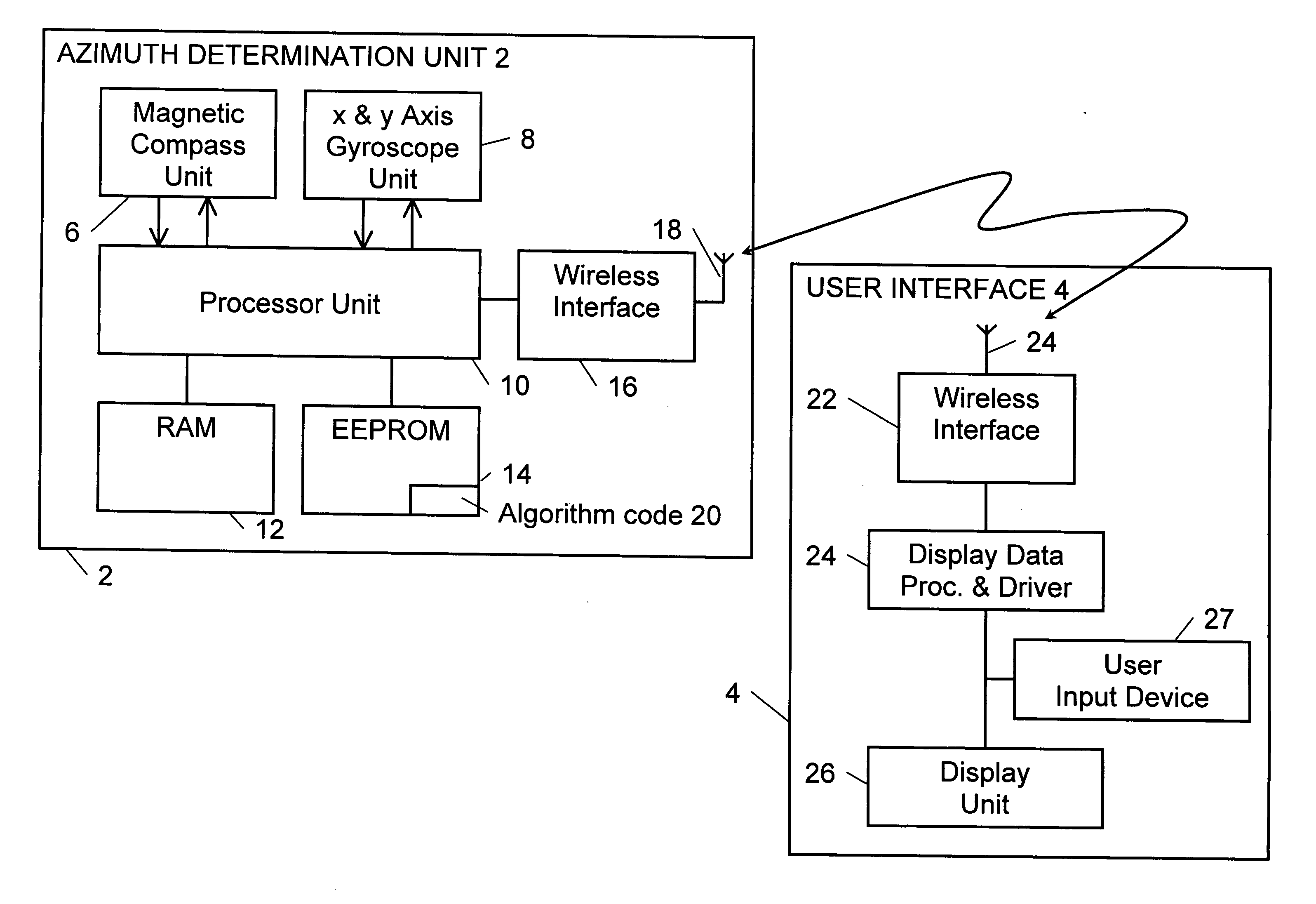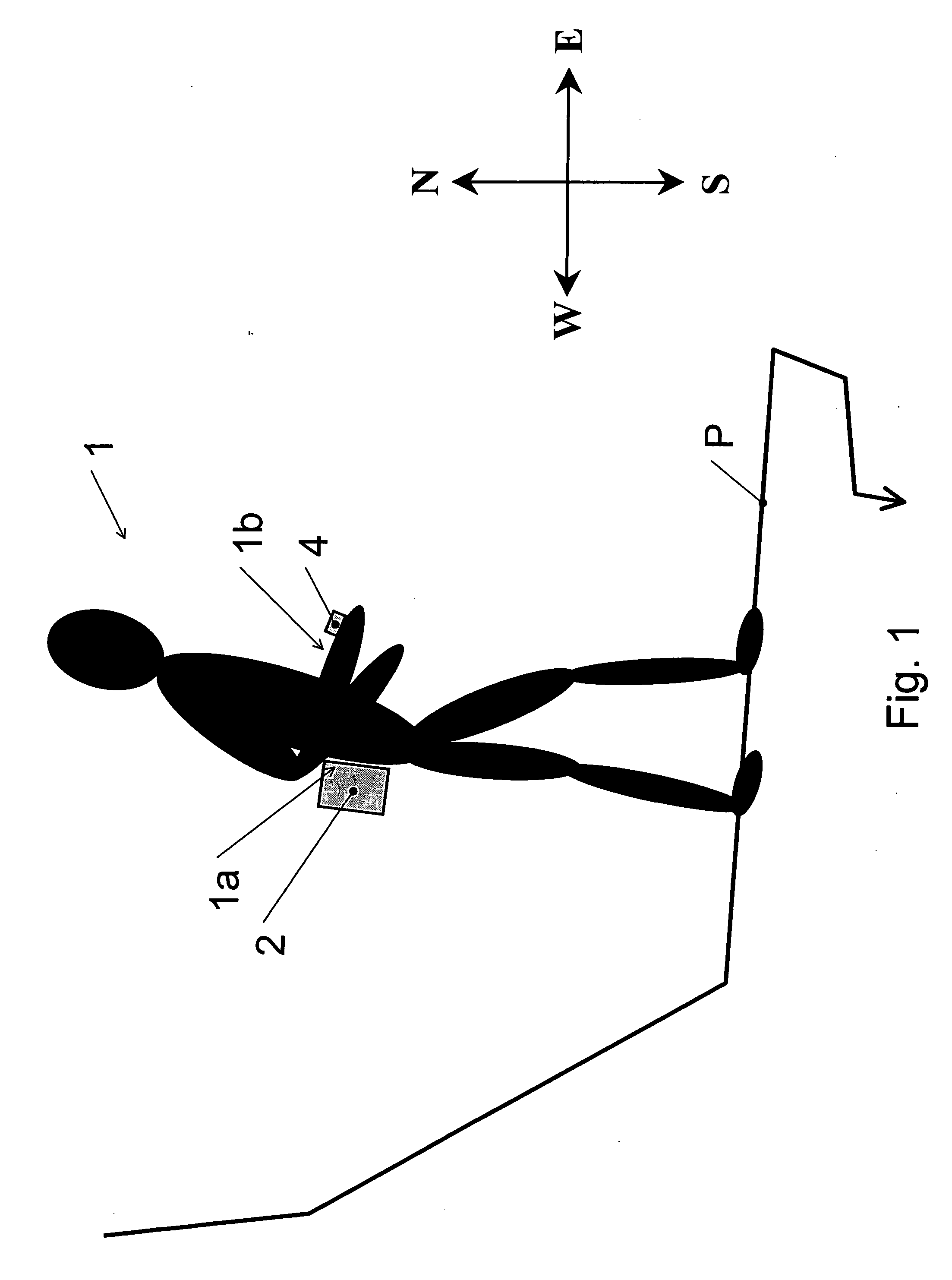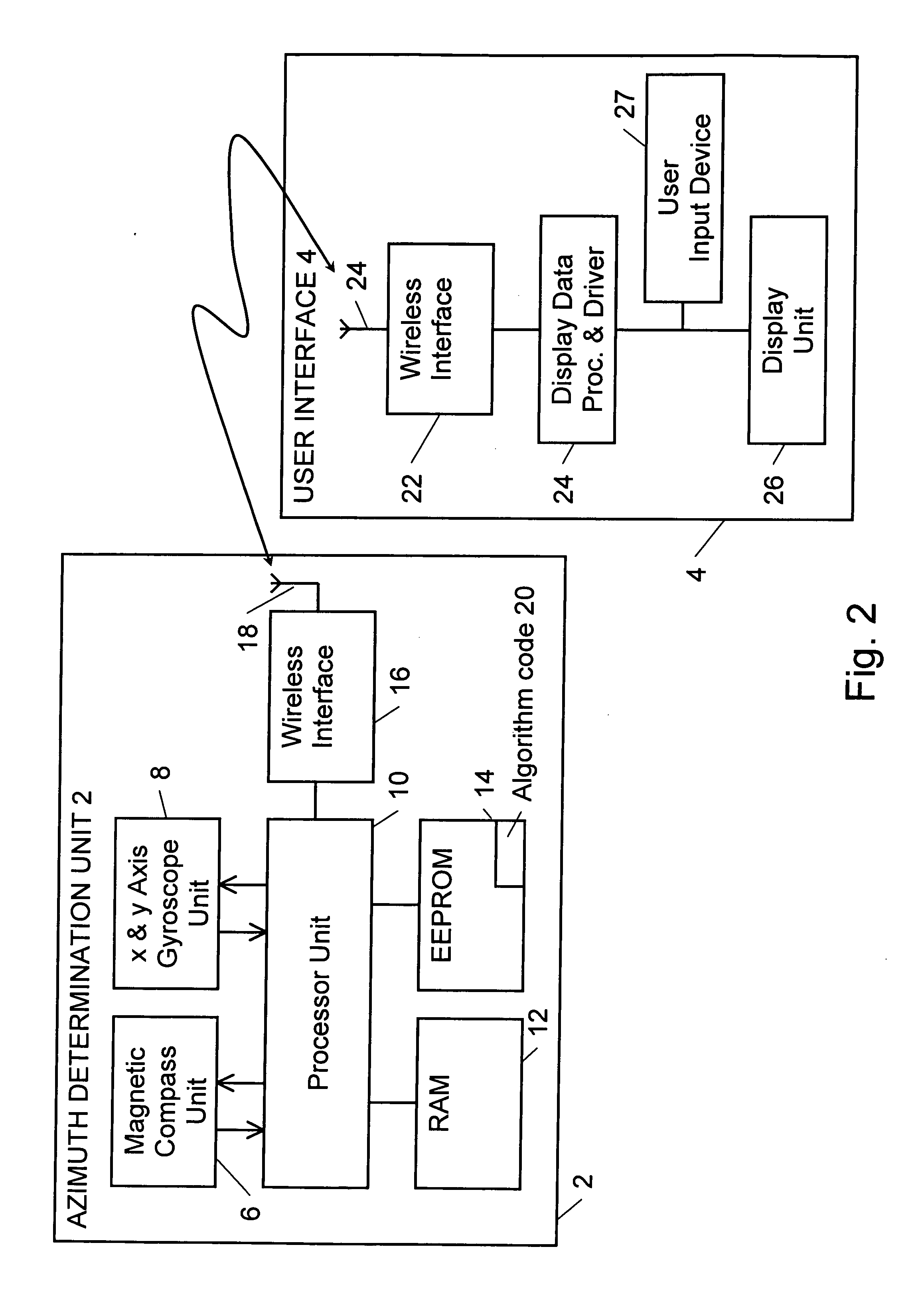Method, apparatus and computer program for azimuth determination e.g. for autonomous navigation applications
a technology of autonomous navigation and computer program, applied in the field of azimuth determination, can solve the problems of affecting the accuracy of azimuth, and prone to poor or impossible reception conditions for observers,
- Summary
- Abstract
- Description
- Claims
- Application Information
AI Technical Summary
Benefits of technology
Problems solved by technology
Method used
Image
Examples
example 1
[0278] The algorithm of the azimuth and position computation process according to the first example is conducted in the following ten steps.
[0279] 1. Compute the azimuth “i” from: i) the gyroscope, ii) the compass and iii) the combined solution in parallel (three different solutions). This results in navigation in 3 different real-time positions.
[0280] Obtain n samples of azimuth values “i”.
[0281] 2. For the n samples, apply the case modeling discrimination on the window. This yields the following information: displacement along a straight line, displacement along a curve, magnetically disturbed or stable environment situation.
[0282] 3. Combine the environmental and geometrical case to identify the window pattern and to produce some preliminary conclusions. For example, if the observer moves along a straight line in a disturbed environment, this would call for reliance on the gyroscope only.
[0283] 4. Check the previous window pattern for continuity. For example, if the previous...
example 2
[0291] The algorithm of the azimuth and position computation process according to the second example is conducted in six steps.
[0292] 1. Compute the azimuth and the position “i” on the basis of the gyroscope azimuth corrected with the parameters obtained from the last gyroscope bias update. This results in navigation in real-time position. Use this procedure to obtain n samples.
[0293] 2. For a window of “n” samples acquired from step 1, adapt, if necessary, the thresholds for the standard deviations of compass and gyroscope.
[0294] 3. Determine whether or not the azimuth in the window can be considered as corresponding to a straight line path in a magnetically undisturbed environment.
[0295] 4. In the affirmative at step 3 of the present algorithm, update the gyroscope azimuth to the compass azimuth, providing new parameters to correct the bias.
[0296] 5. Update the position: [0297] either calculate a new position for all samples since the previous bias update, or [0298] estimate ...
PUM
 Login to View More
Login to View More Abstract
Description
Claims
Application Information
 Login to View More
Login to View More - R&D
- Intellectual Property
- Life Sciences
- Materials
- Tech Scout
- Unparalleled Data Quality
- Higher Quality Content
- 60% Fewer Hallucinations
Browse by: Latest US Patents, China's latest patents, Technical Efficacy Thesaurus, Application Domain, Technology Topic, Popular Technical Reports.
© 2025 PatSnap. All rights reserved.Legal|Privacy policy|Modern Slavery Act Transparency Statement|Sitemap|About US| Contact US: help@patsnap.com



